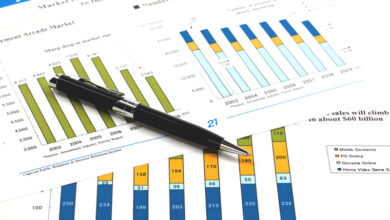After $20 Trillion Losses, Brave Investors To Wipe Out Huge Wealth


World stocks have shed more than $20 trillion in value since hitting a record high in January
World stocks have lost more than $20 trillion in value this year since peaking in January, and a steep slide hit global financial markets in early 2020 on fears of a recession. caused by the pandemic.
To put that level of damage into context, more than $20 trillion has been wiped off global stock markets this year since January’s peak, more than six times gross domestic product (GDP). of India – about 3.2 trillion USD.
That loss is roughly equal to the total US GDP of about $23 trillion and about one-fifth of the World’s GDP of nearly $100 trillion.
GDP data is referenced based on the latest data from the World Bank.
But the worst is far from over for world stocks, as safe-haven sentiment once again rests on expectations of a global recession driven by banks’ aggressive policy tightening stance. major central government in the fight against decades-high inflation.
Economists have raised the possibility of a recession in the United States and Europe, citing aggressive interest rate hikes and the war in Ukraine.
That’s despite the massive wealth wiped out so far and a rough first half of the year as most of the major financial markets are firmly entrenched in bear market territory.
But a Reuters report shows price changes in half a month since 1930 The data shows the history of the first two weeks of July offers the best returns of the year for S&P 500 investors.
After three straight quarters of declines for S&P 500 stocks, with the index down a fifth, or 20%, since the start of the year, some investors say they’re open to buying. The S&P 500 index has risen slightly this month.
Paul O’Connor, head of multi-asset at Janus Henderson Investors, told Reuters.
“We see a record drop in prices, a really big equity rebalancing going on, maybe … in Europe and the US,” he said. because we had a big drop in the stock market.”
But beyond the first two weeks of this month, the outlook doesn’t bode well for stocks as market participants offer cautious advice, anticipating the next few months for riskier assets in the future. the context of rising interest rates and concerns about economic growth.
Indeed, a resurgence of risk-taking sentiment on fears of a recession, and rising cost of living, has made consumers wary. In addition, rising energy prices and a host of key economic indicators have raised concerns about the health of the global economy.
The first six months of the year were brutal for investors.
Goldman Sachs analysts say the 60/40 portfolio strategy, which follows the standard portfolio technique of keeping 60% of its assets in stocks and 40% in fixed income, has posted its worst first-half profit since 1932, down 17%, and UBS suggested using equity sell-offs and volatility to build long positions, according to Reuters.
Mr O’Connor told Reuters: “The problem is that if we look beyond (the two-week window), then things get complicated. His team will use any potential seasonal gains in July to sell on the rally.
According to Reuters.
Earnings season could spark a fresh drop in global stock markets
In a separate report, investors and analysts warned that the upcoming corporate earnings season could send global stock prices plummeting again, with earnings forecasts looking overly optimistic given the downside risks. recession increased.
The Reuters report shows valuations have fallen below historical averages, which could attract bargain hunters. However, recent warnings about profits from US companies have worried traders about a series of declines as spiral energy and other input costs fall and consumers cut spending. pepper.
Emmanuel Cau, a strategist at Barclays, told Reuters that earnings are “taken from valuation as the next market driver”.
According to the Bank of England, the stock market may struggle to find a bottom until profit forecasts are reset to lower levels. That’s because expectations of high returns have “deflated” the company’s valuation to levels that could mislead investors.
According to Francesco Cudrano, adviser to Simplify, “There have been very few downward revisions to the company’s earnings; there is still too much optimism. Partners, quoted by Reuters.
In particular, for India, the outlook remains weak for foreign investors’ migration as the country faces a widening financial deficit due to a plunging rupee and rising energy costs.
Indeed, it was something no one expected, even in their wildest predictions in early 2022, when the Indian currency traded around 74 against the greenback.
From changing hands at 77 per dollar for the first time in March, a few days after Russia invaded Ukraine, to 78 and then 79 has happened rapidly in the foreign exchange market, at an exchange rate of 80 per dollar. green silver is not too far away.




